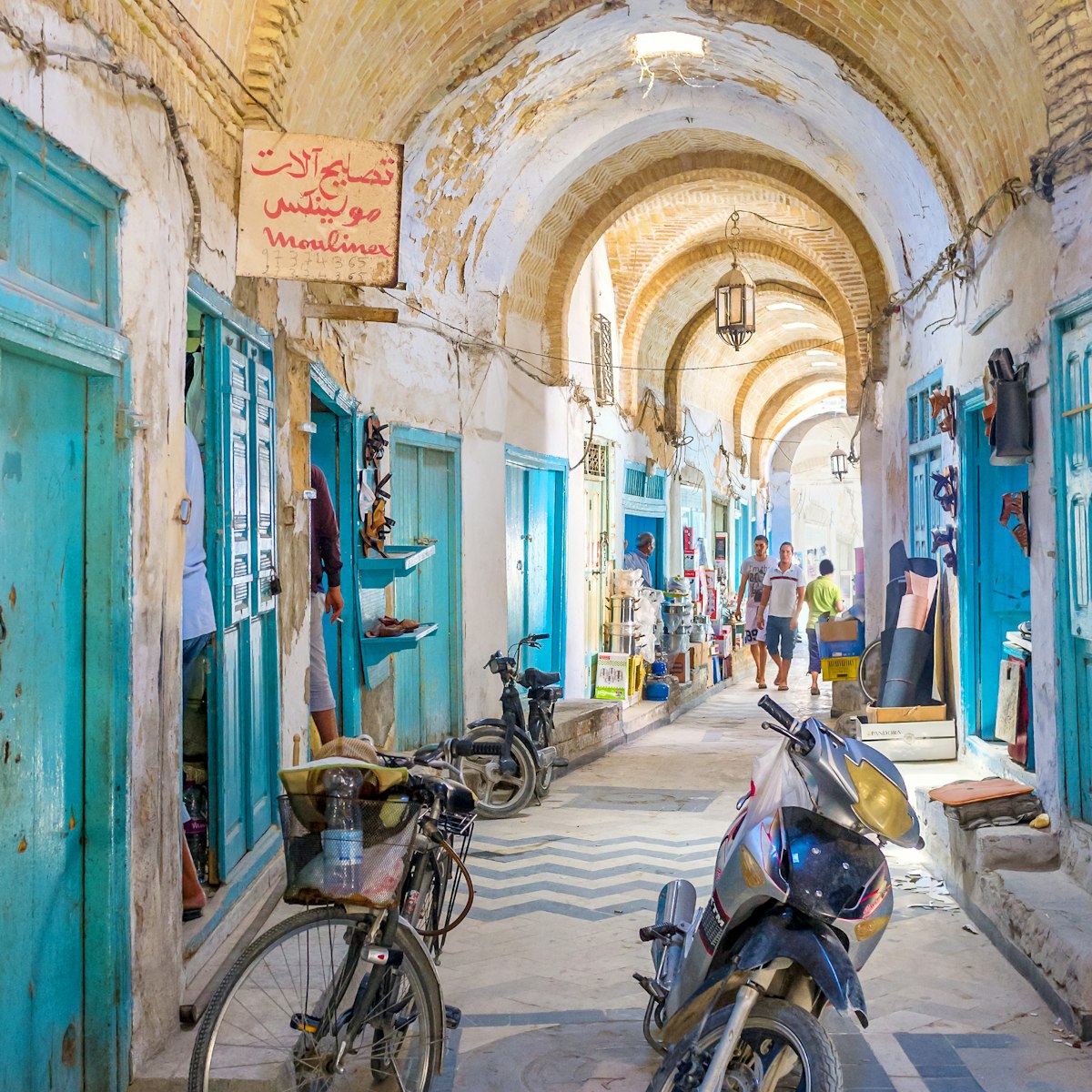Also known as Sidi Okba Mosque, after the founder of Kairouan who built the first mosque on this site in AD 670, this is North Africa’s holiest Islamic site. The original mosque was completely destroyed, and most of what stands today was built by the Aghlabids in the 9th century. Its minaret is the oldest in the Maghreb, and its magnificent prayer hall has 414 pillars supporting horseshoe arches; non-Muslims may peek into this from the internal courtyard but can't enter.
The exterior, with its buttressed walls, has a typically unadorned Aghlabid design. Impressions change once you step into the huge, marble-paved courtyard, surrounded by an arched colonnade. The courtyard was designed for water catchment, and the paving slopes towards an intricately decorated central drainage hole that delivers the collected rainwater into the 9th-century cisterns below. The decorations were designed to filter dust from the water. The marble rims of the two wells both have deep rope-grooves worn by centuries of hauling water up from the depths.
The northwestern end of the courtyard is dominated by the square three-tiered minaret. The lowest level was built in AD 728. At its base, note the two Roman slabs (one upside down) bearing Latin inscriptions.
The prayer hall is at the southern end of the courtyard. The enormous, studded wooden doors here date from 1829; the carved panels above them are particularly fine. The pillars were, like those of the colonnade, originally Roman or Byzantine, salvaged from Carthage and Hadrumètum (Sousse), and no two are the same. At the far end of the hall, it’s just possible to make out the precious 9th-century tiles behind the mihrab (niche showing the direction of Mecca) between two red marble columns. The tiles were imported from Baghdad along with the wood for the richly adorned minbar (pulpit) next to them. The ribbed dome in front of the mihrab has epigraphic and floral decoration and is generally acknowledged to be an Aghlabid masterpiece.
Note the rugs covering every inch of the prayer hall floor. These are made by local female artisans, who donate their work as a gift to Allah.
Visitors must be appropriately dressed; robes are available at the entrance. Entry is via the main gate on Rue Okba Ibn Nafaa. The other eight gates are closed to non-Muslims.

